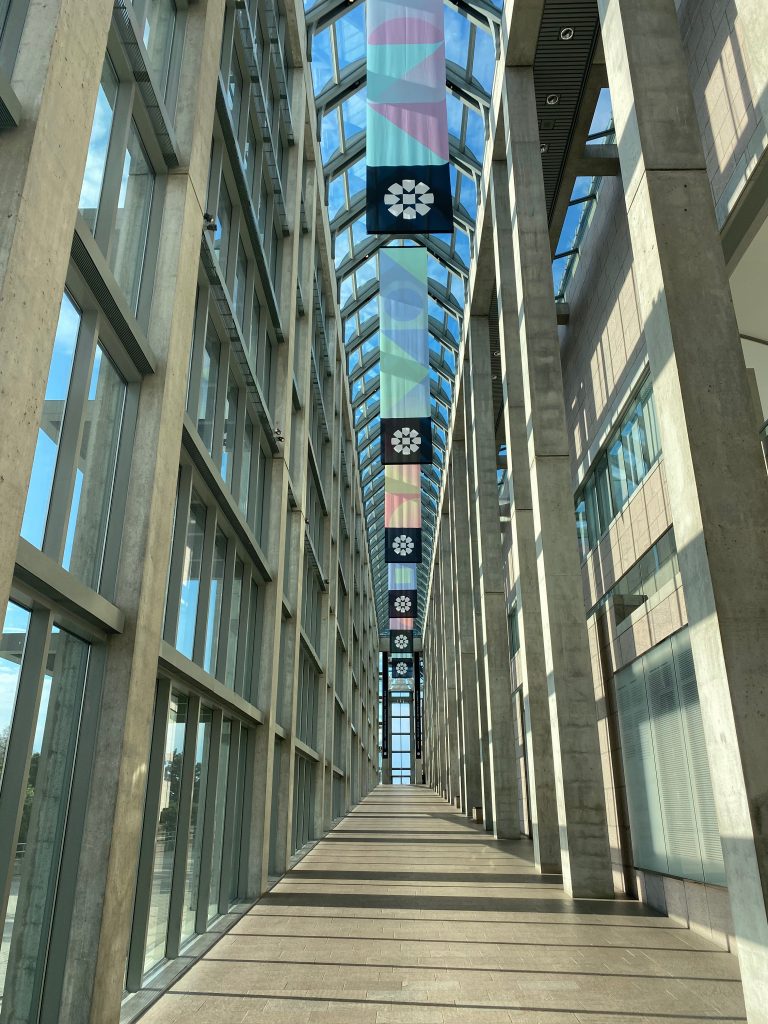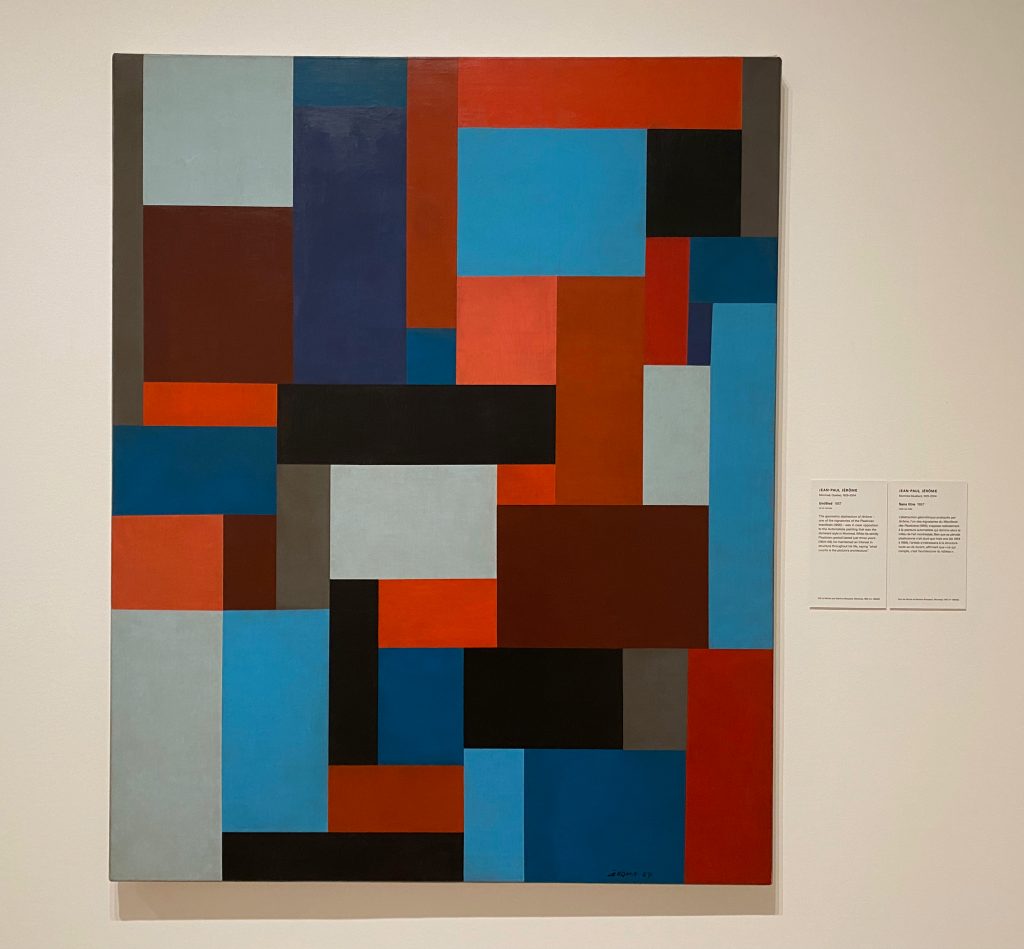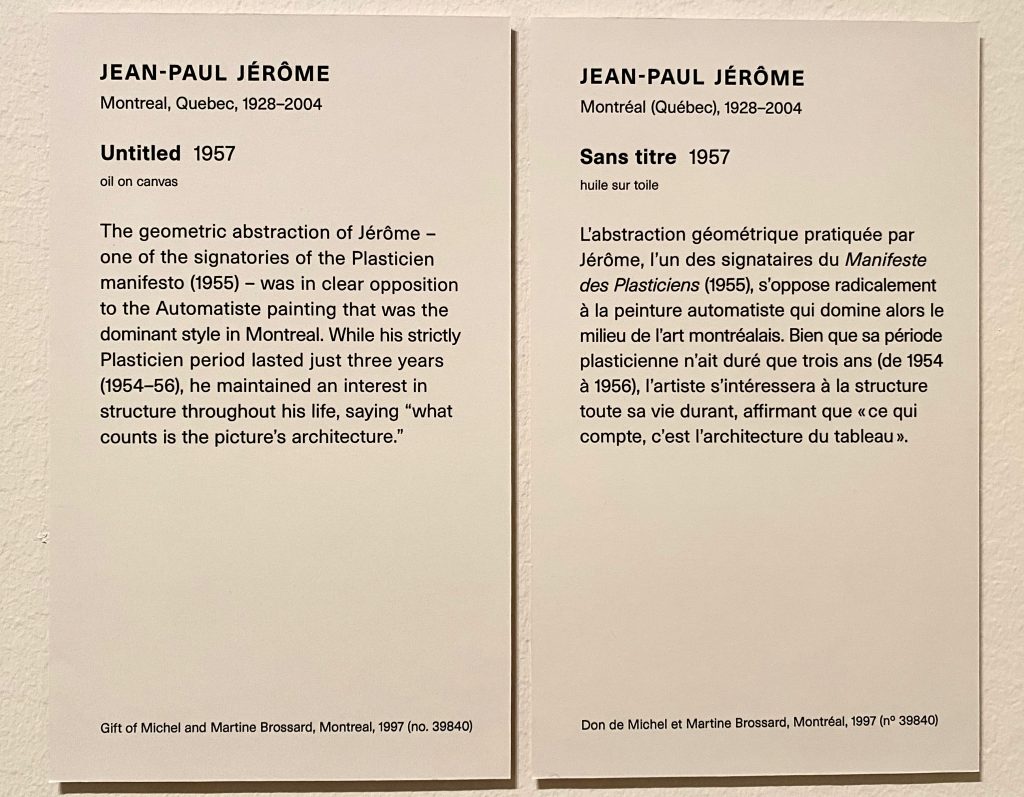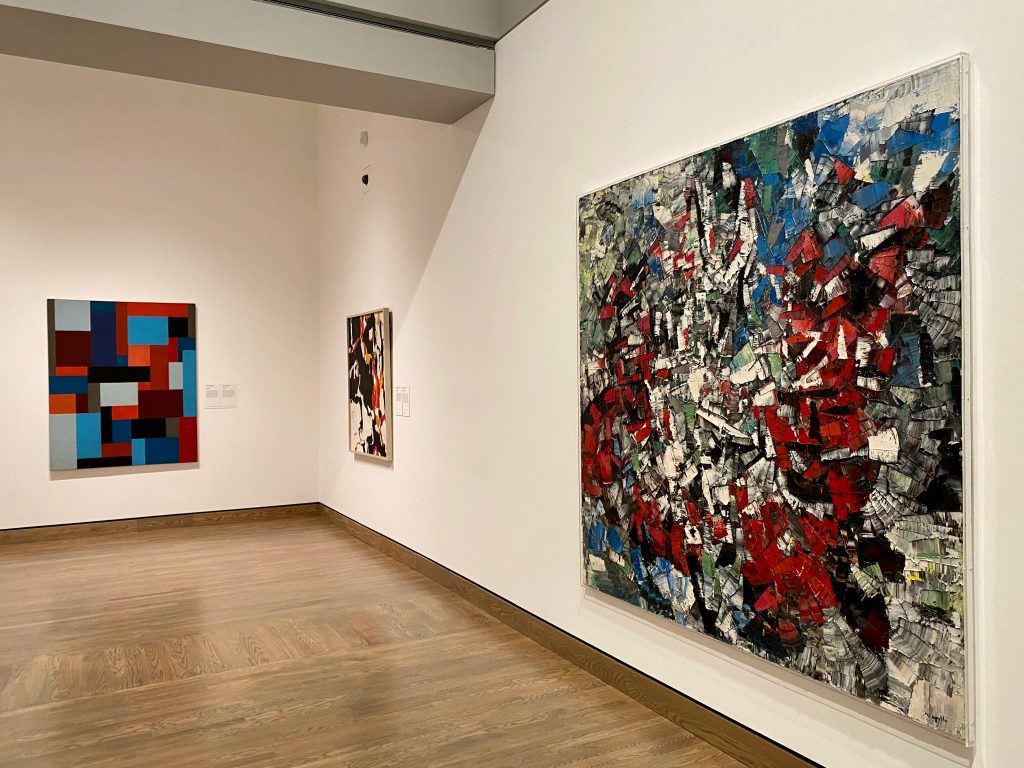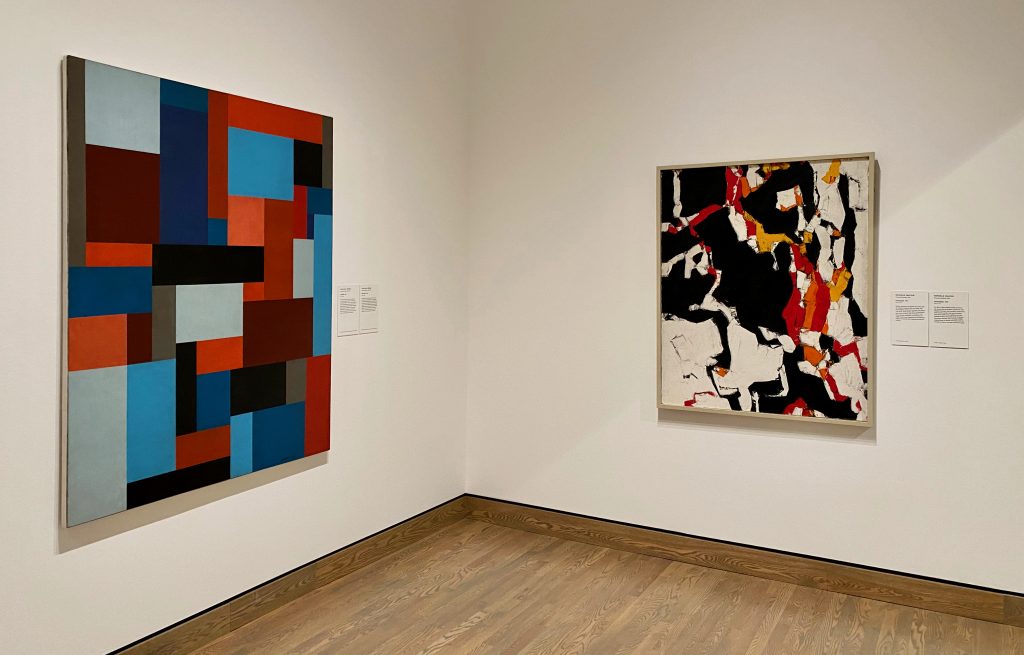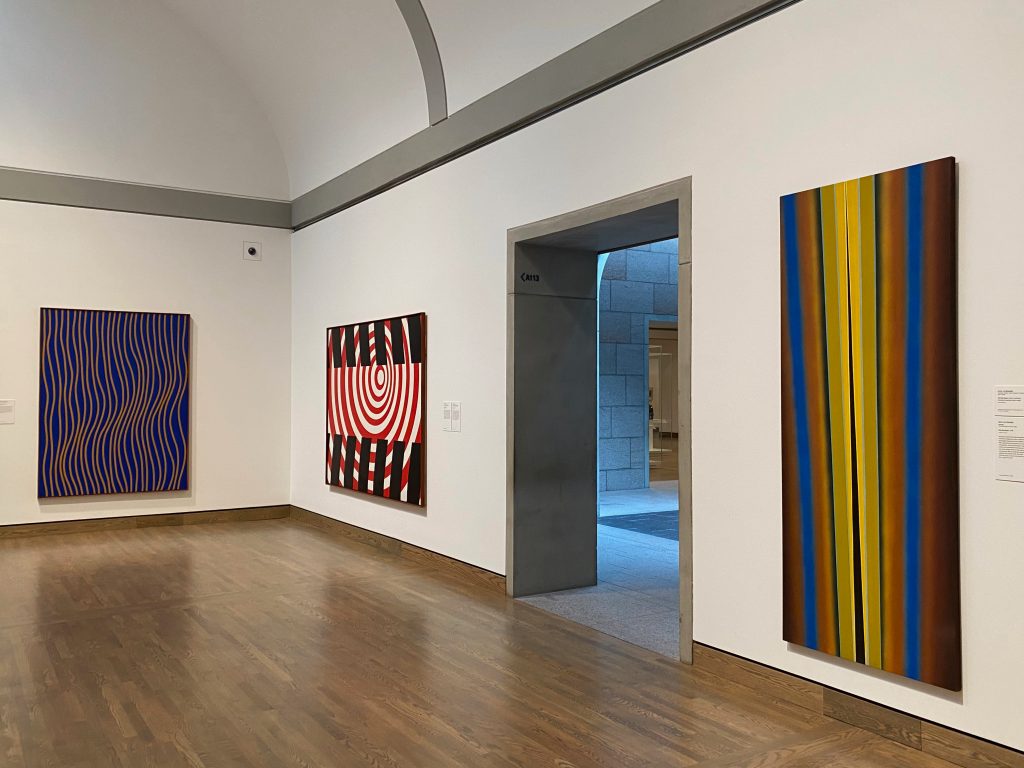Abstract painting and the emergence of Inuit sculpture / 1940s to 1960s
A magnificent exhibition bringing together important works by Jérôme, Riopelle, Borduas, Ferron, Bush, Letendre, Jauran, Barbeau, Molinari, Maltais, Tousignant, Gauvreau, Goguen, Hodgson, Ronald, Tanabe, Balzar…
During the 1950s, it was not uncommon to see abstract paintings alongside Inuit sculptures in galleries and homes across Canada.
Following the introduction of stone for carving in the 1950s, Inuit artist became a creative force to be reckoned with, despite the intense societal and cultural turmoil they faced. Sculpture has long been their most prolific visual art medium, expressing Inuit culture to the world. While strongly connected to a 4,000-year history of carving, stone was a new medium, tied to the forced settlement of a once-nomadic people.
Two different approaches to abstract painting can be seen in this gallery. The Automatistes (launched in the 1940s) and the Plasticiens (launched in the 1950s), groups of Montreal-based artists and also the group Painters Eleven based in Toronto, active in the 1950s and 1960s.

